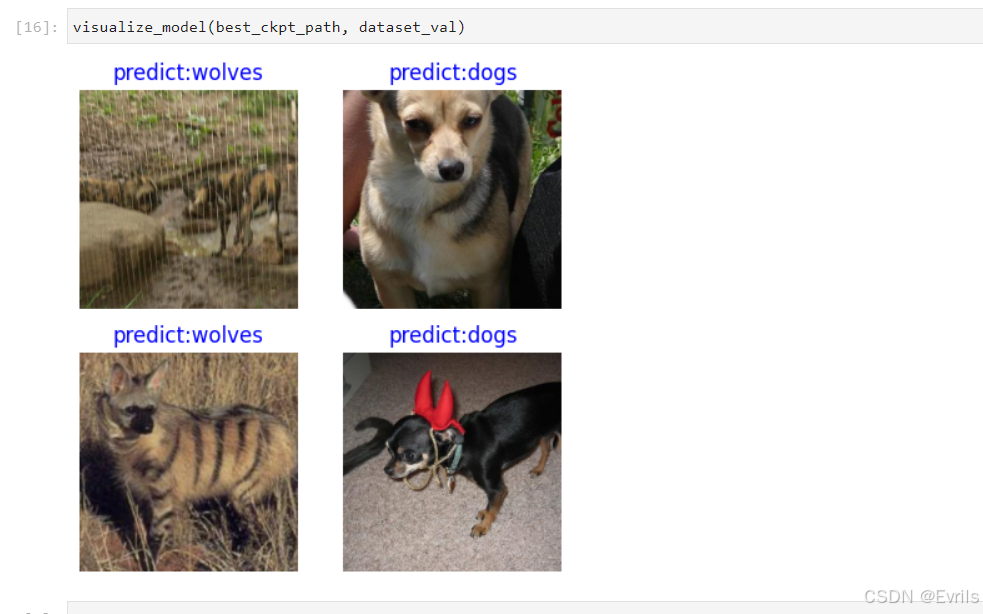打卡

目录
打卡
环境准备
准备阶段
数据加载与预处理
BertTokenizer
部分输出
模型构建
gpt2模型结构输出
训练流程
部分输出
部分输出2(减少训练数据)
推理流程
环境准备
pip install -i https://pypi.mirrors.ustc.edu.cn/simple mindspore==2.2.14
pip install tokenizers==0.15.0 -i https://pypi.tuna.tsinghua.edu.cn/simple
# 该案例在 mindnlp 0.3.1 版本完成适配,如果发现案例跑不通,可以指定mindnlp版本,执行`!pip install mindnlp==0.3.1`
pip install mindnlp准备阶段
nlpcc2017摘要数据,内容为新闻正文及其摘要,总计50000个样本。
来源:nlpcc2017摘要数据

数据加载与预处理
- 原始数据格式:
article: [CLS] article_context [SEP]
summary: [CLS] summary_context [SEP]
- 预处理后的数据格式:
[CLS] article_context [SEP] summary_context [SEP]BertTokenizer
因GPT2无中文的tokenizer,使用BertTokenizer替代。代码如下:
from mindspore.dataset import TextFileDataset
import json
import numpy as np
from mindnlp.transformers import BertTokenizer
# preprocess dataset
def process_dataset(dataset, tokenizer, batch_size=6, max_seq_len=1024, shuffle=False):
def read_map(text):
data = json.loads(text.tobytes())
return np.array(data['article']), np.array(data['summarization'])
def merge_and_pad(article, summary):
# tokenization
# pad to max_seq_length, only truncate the article
tokenized = tokenizer(text=article, text_pair=summary,
padding='max_length', truncation='only_first', max_length=max_seq_len)
return tokenized['input_ids'], tokenized['input_ids']
dataset = dataset.map(read_map, 'text', ['article', 'summary'])
# change column names to input_ids and labels for the following training
dataset = dataset.map(merge_and_pad, ['article', 'summary'], ['input_ids', 'labels'])
dataset = dataset.batch(batch_size)
if shuffle:
dataset = dataset.shuffle(batch_size)
return dataset
# load dataset
dataset = TextFileDataset(str(path), shuffle=False)
print(dataset.get_dataset_size()) ### 50000
# split into training and testing dataset
train_dataset, test_dataset = dataset.split([0.9, 0.1], randomize=False)
print(len(train_dataset)) ### 45000
# We use BertTokenizer for tokenizing chinese context.
tokenizer = BertTokenizer.from_pretrained('bert-base-chinese')
len(tokenizer)
train_dataset = process_dataset(train_dataset, tokenizer, batch_size=4)
## next(train_dataset.create_tuple_iterator())
部分输出



模型构建
如下,通过两个类实现:
- 构建GPT2ForSummarization模型,注意shift right的操作。
- 动态学习率
from mindspore import ops
from mindnlp.transformers import GPT2LMHeadModel
from mindspore.nn.learning_rate_schedule import LearningRateSchedule
from mindspore import nn
from mindnlp.transformers import GPT2Config, GPT2LMHeadModel
from mindnlp._legacy.engine import Trainer
from mindnlp._legacy.engine.callbacks import CheckpointCallback
class GPT2ForSummarization(GPT2LMHeadModel):
def construct(
self,
input_ids = None,
attention_mask = None,
labels = None,
):
outputs = super().construct(input_ids=input_ids, attention_mask=attention_mask)
shift_logits = outputs.logits[..., :-1, :]
shift_labels = labels[..., 1:]
# Flatten the tokens
loss = ops.cross_entropy(shift_logits.view(-1, shift_logits.shape[-1]), shift_labels.view(-1), ignore_index=tokenizer.pad_token_id)
return loss
class LinearWithWarmUp(LearningRateSchedule):
"""
Warmup-decay learning rate.
"""
def __init__(self, learning_rate, num_warmup_steps, num_training_steps):
super().__init__()
self.learning_rate = learning_rate
self.num_warmup_steps = num_warmup_steps
self.num_training_steps = num_training_steps
def construct(self, global_step):
if global_step < self.num_warmup_steps:
return global_step / float(max(1, self.num_warmup_steps)) * self.learning_rate
return ops.maximum(
0.0, (self.num_training_steps - global_step) / (max(1, self.num_training_steps - self.num_warmup_steps))
) * self.learning_rate
## 训练参数设置
num_epochs = 1
warmup_steps = 2000
learning_rate = 1.5e-4
num_training_steps = num_epochs * train_dataset.get_dataset_size()
config = GPT2Config(vocab_size=len(tokenizer))
model = GPT2ForSummarization(config)
lr_scheduler = LinearWithWarmUp(
learning_rate=learning_rate,
num_warmup_steps=warmup_steps,
num_training_steps=num_training_steps)
optimizer = nn.AdamWeightDecay(model.trainable_params(),
learning_rate=lr_scheduler)
# 记录模型参数数量
print('number of model parameters: {}'.format(model.num_parameters()))gpt2模型结构输出
1. 1级主类:GPT2ForSummarization
2. 2级类:GPT2Model 层,是transformer 结构,是模型的核心部分。
3. 2级类:lm_head 结构的 Dense 全连接层 , dim[in, out]=[768, 21128]。
4. GPT2Model 结构下的3级类组件分三层:
>> wte 嵌入层:dim[in, out]=[21128, 768] ,即使用了 21128 个词汇,每个词汇映射到一个768 维的向量。
>> wpe 嵌入层:dim[in, out]=[1024, 768]
>> drop 层。
>> layers h 隐网络结构层:Transformer模型的主体,包含 12 个 GPT2Block。
>> ln_f LayerNorm 最后的层归一化。
5. GPT2Block 的结构:
》》ln_1 LayerNorm层,层归一化,用于在注意力机制之前对输入进行归一化。
》》attn GPT2Attention层,自注意力机制,用于计算输入序列中不同位置的注意力权重。共包括3层:Conv1D、Conv1D、CustomDropout、CustomDropout。
》》ln_2 LayerNorm层,用于自注意力之后的归一化。
》》mlp GPT2MLP层,多层感知机,用于对自注意力层的输出进行进一步的非线性变换。这里使用的操作包括:Conv1D、Conv1D、GELU、CustomDropout。
$ print(model)
GPT2ForSummarization<
(transformer): GPT2Model<
(wte): Embedding<vocab_size=21128, embedding_size=768, use_one_hot=False, weight=Parameter (Tensor(shape=[21128, 768], dtype=Float32, value=[...], name=transformer.wte.weight), requires_grad=True), dtype=Float32, padding_idx=None>
(wpe): Embedding<vocab_size=1024, embedding_size=768, use_one_hot=False, weight=Parameter (Tensor(shape=[1024, 768], dtype=Float32, value=[...], name=transformer.wpe.weight), requires_grad=True), dtype=Float32, padding_idx=None>
(drop): CustomDropout<>
(h): CellList<
(0): GPT2Block<
(ln_1): LayerNorm<normalized_shape=[768], begin_norm_axis=-1, begin_params_axis=-1, weight=Parameter (Tensor(shape=[768], dtype=Float32, value=[...], name=transformer.h.0.ln_1.weight), requires_grad=True), bias=Parameter (Tensor(shape=[768], dtype=Float32, value=[...], name=transformer.h.0.ln_1.bias), requires_grad=True)>
(attn): GPT2Attention<
(c_attn): Conv1D<
(matmul): Matmul<>
>
(c_proj): Conv1D<
(matmul): Matmul<>
>
(attn_dropout): CustomDropout<>
(resid_dropout): CustomDropout<>
>
(ln_2): LayerNorm<normalized_shape=[768], begin_norm_axis=-1, begin_params_axis=-1, weight=Parameter (Tensor(shape=[768], dtype=Float32, value=[...], name=transformer.h.0.ln_2.weight), requires_grad=True), bias=Parameter (Tensor(shape=[768], dtype=Float32, value=[...], name=transformer.h.0.ln_2.bias), requires_grad=True)>
(mlp): GPT2MLP<
(c_fc): Conv1D<
(matmul): Matmul<>
>
(c_proj): Conv1D<
(matmul): Matmul<>
>
(act): GELU<>
(dropout): CustomDropout<>
>
>
(1): GPT2Block<
(ln_1): LayerNorm<normalized_shape=[768], begin_norm_axis=-1, begin_params_axis=-1, weight=Parameter (Tensor(shape=[768], dtype=Float32, value=[...], name=transformer.h.1.ln_1.weight), requires_grad=True), bias=Parameter (Tensor(shape=[768], dtype=Float32, value=[...], name=transformer.h.1.ln_1.bias), requires_grad=True)>
(attn): GPT2Attention<
(c_attn): Conv1D<
(matmul): Matmul<>
>
(c_proj): Conv1D<
(matmul): Matmul<>
>
(attn_dropout): CustomDropout<>
(resid_dropout): CustomDropout<>
>
(ln_2): LayerNorm<normalized_shape=[768], begin_norm_axis=-1, begin_params_axis=-1, weight=Parameter (Tensor(shape=[768], dtype=Float32, value=[...], name=transformer.h.1.ln_2.weight), requires_grad=True), bias=Parameter (Tensor(shape=[768], dtype=Float32, value=[...], name=transformer.h.1.ln_2.bias), requires_grad=True)>
(mlp): GPT2MLP<
(c_fc): Conv1D<
(matmul): Matmul<>
>
(c_proj): Conv1D<
(matmul): Matmul<>
>
(act): GELU<>
(dropout): CustomDropout<>
>
>
(2): GPT2Block<
(ln_1): LayerNorm<normalized_shape=[768], begin_norm_axis=-1, begin_params_axis=-1, weight=Parameter (Tensor(shape=[768], dtype=Float32, value=[...], name=transformer.h.2.ln_1.weight), requires_grad=True), bias=Parameter (Tensor(shape=[768], dtype=Float32, value=[...], name=transformer.h.2.ln_1.bias), requires_grad=True)>
(attn): GPT2Attention<
(c_attn): Conv1D<
(matmul): Matmul<>
>
(c_proj): Conv1D<
(matmul): Matmul<>
>
(attn_dropout): CustomDropout<>
(resid_dropout): CustomDropout<>
>
(ln_2): LayerNorm<normalized_shape=[768], begin_norm_axis=-1, begin_params_axis=-1, weight=Parameter (Tensor(shape=[768], dtype=Float32, value=[...], name=transformer.h.2.ln_2.weight), requires_grad=True), bias=Parameter (Tensor(shape=[768], dtype=Float32, value=[...], name=transformer.h.2.ln_2.bias), requires_grad=True)>
(mlp): GPT2MLP<
(c_fc): Conv1D<
(matmul): Matmul<>
>
(c_proj): Conv1D<
(matmul): Matmul<>
>
(act): GELU<>
(dropout): CustomDropout<>
>
>
(3): GPT2Block<
(ln_1): LayerNorm<normalized_shape=[768], begin_norm_axis=-1, begin_params_axis=-1, weight=Parameter (Tensor(shape=[768], dtype=Float32, value=[...], name=transformer.h.3.ln_1.weight), requires_grad=True), bias=Parameter (Tensor(shape=[768], dtype=Float32, value=[...], name=transformer.h.3.ln_1.bias), requires_grad=True)>
(attn): GPT2Attention<
(c_attn): Conv1D<
(matmul): Matmul<>
>
(c_proj): Conv1D<
(matmul): Matmul<>
>
(attn_dropout): CustomDropout<>
(resid_dropout): CustomDropout<>
>
(ln_2): LayerNorm<normalized_shape=[768], begin_norm_axis=-1, begin_params_axis=-1, weight=Parameter (Tensor(shape=[768], dtype=Float32, value=[...], name=transformer.h.3.ln_2.weight), requires_grad=True), bias=Parameter (Tensor(shape=[768], dtype=Float32, value=[...], name=transformer.h.3.ln_2.bias), requires_grad=True)>
(mlp): GPT2MLP<
(c_fc): Conv1D<
(matmul): Matmul<>
>
(c_proj): Conv1D<
(matmul): Matmul<>
>
(act): GELU<>
(dropout): CustomDropout<>
>
>
(4): GPT2Block<
(ln_1): LayerNorm<normalized_shape=[768], begin_norm_axis=-1, begin_params_axis=-1, weight=Parameter (Tensor(shape=[768], dtype=Float32, value=[...], name=transformer.h.4.ln_1.weight), requires_grad=True), bias=Parameter (Tensor(shape=[768], dtype=Float32, value=[...], name=transformer.h.4.ln_1.bias), requires_grad=True)>
(attn): GPT2Attention<
(c_attn): Conv1D<
(matmul): Matmul<>
>
(c_proj): Conv1D<
(matmul): Matmul<>
>
(attn_dropout): CustomDropout<>
(resid_dropout): CustomDropout<>
>
(ln_2): LayerNorm<normalized_shape=[768], begin_norm_axis=-1, begin_params_axis=-1, weight=Parameter (Tensor(shape=[768], dtype=Float32, value=[...], name=transformer.h.4.ln_2.weight), requires_grad=True), bias=Parameter (Tensor(shape=[768], dtype=Float32, value=[...], name=transformer.h.4.ln_2.bias), requires_grad=True)>
(mlp): GPT2MLP<
(c_fc): Conv1D<
(matmul): Matmul<>
>
(c_proj): Conv1D<
(matmul): Matmul<>
>
(act): GELU<>
(dropout): CustomDropout<>
>
>
(5): GPT2Block<
(ln_1): LayerNorm<normalized_shape=[768], begin_norm_axis=-1, begin_params_axis=-1, weight=Parameter (Tensor(shape=[768], dtype=Float32, value=[...], name=transformer.h.5.ln_1.weight), requires_grad=True), bias=Parameter (Tensor(shape=[768], dtype=Float32, value=[...], name=transformer.h.5.ln_1.bias), requires_grad=True)>
(attn): GPT2Attention<
(c_attn): Conv1D<
(matmul): Matmul<>
>
(c_proj): Conv1D<
(matmul): Matmul<>
>
(attn_dropout): CustomDropout<>
(resid_dropout): CustomDropout<>
>
(ln_2): LayerNorm<normalized_shape=[768], begin_norm_axis=-1, begin_params_axis=-1, weight=Parameter (Tensor(shape=[768], dtype=Float32, value=[...], name=transformer.h.5.ln_2.weight), requires_grad=True), bias=Parameter (Tensor(shape=[768], dtype=Float32, value=[...], name=transformer.h.5.ln_2.bias), requires_grad=True)>
(mlp): GPT2MLP<
(c_fc): Conv1D<
(matmul): Matmul<>
>
(c_proj): Conv1D<
(matmul): Matmul<>
>
(act): GELU<>
(dropout): CustomDropout<>
>
>
(6): GPT2Block<
(ln_1): LayerNorm<normalized_shape=[768], begin_norm_axis=-1, begin_params_axis=-1, weight=Parameter (Tensor(shape=[768], dtype=Float32, value=[...], name=transformer.h.6.ln_1.weight), requires_grad=True), bias=Parameter (Tensor(shape=[768], dtype=Float32, value=[...], name=transformer.h.6.ln_1.bias), requires_grad=True)>
(attn): GPT2Attention<
(c_attn): Conv1D<
(matmul): Matmul<>
>
(c_proj): Conv1D<
(matmul): Matmul<>
>
(attn_dropout): CustomDropout<>
(resid_dropout): CustomDropout<>
>
(ln_2): LayerNorm<normalized_shape=[768], begin_norm_axis=-1, begin_params_axis=-1, weight=Parameter (Tensor(shape=[768], dtype=Float32, value=[...], name=transformer.h.6.ln_2.weight), requires_grad=True), bias=Parameter (Tensor(shape=[768], dtype=Float32, value=[...], name=transformer.h.6.ln_2.bias), requires_grad=True)>
(mlp): GPT2MLP<
(c_fc): Conv1D<
(matmul): Matmul<>
>
(c_proj): Conv1D<
(matmul): Matmul<>
>
(act): GELU<>
(dropout): CustomDropout<>
>
>
(7): GPT2Block<
(ln_1): LayerNorm<normalized_shape=[768], begin_norm_axis=-1, begin_params_axis=-1, weight=Parameter (Tensor(shape=[768], dtype=Float32, value=[...], name=transformer.h.7.ln_1.weight), requires_grad=True), bias=Parameter (Tensor(shape=[768], dtype=Float32, value=[...], name=transformer.h.7.ln_1.bias), requires_grad=True)>
(attn): GPT2Attention<
(c_attn): Conv1D<
(matmul): Matmul<>
>
(c_proj): Conv1D<
(matmul): Matmul<>
>
(attn_dropout): CustomDropout<>
(resid_dropout): CustomDropout<>
>
(ln_2): LayerNorm<normalized_shape=[768], begin_norm_axis=-1, begin_params_axis=-1, weight=Parameter (Tensor(shape=[768], dtype=Float32, value=[...], name=transformer.h.7.ln_2.weight), requires_grad=True), bias=Parameter (Tensor(shape=[768], dtype=Float32, value=[...], name=transformer.h.7.ln_2.bias), requires_grad=True)>
(mlp): GPT2MLP<
(c_fc): Conv1D<
(matmul): Matmul<>
>
(c_proj): Conv1D<
(matmul): Matmul<>
>
(act): GELU<>
(dropout): CustomDropout<>
>
>
(8): GPT2Block<
(ln_1): LayerNorm<normalized_shape=[768], begin_norm_axis=-1, begin_params_axis=-1, weight=Parameter (Tensor(shape=[768], dtype=Float32, value=[...], name=transformer.h.8.ln_1.weight), requires_grad=True), bias=Parameter (Tensor(shape=[768], dtype=Float32, value=[...], name=transformer.h.8.ln_1.bias), requires_grad=True)>
(attn): GPT2Attention<
(c_attn): Conv1D<
(matmul): Matmul<>
>
(c_proj): Conv1D<
(matmul): Matmul<>
>
(attn_dropout): CustomDropout<>
(resid_dropout): CustomDropout<>
>
(ln_2): LayerNorm<normalized_shape=[768], begin_norm_axis=-1, begin_params_axis=-1, weight=Parameter (Tensor(shape=[768], dtype=Float32, value=[...], name=transformer.h.8.ln_2.weight), requires_grad=True), bias=Parameter (Tensor(shape=[768], dtype=Float32, value=[...], name=transformer.h.8.ln_2.bias), requires_grad=True)>
(mlp): GPT2MLP<
(c_fc): Conv1D<
(matmul): Matmul<>
>
(c_proj): Conv1D<
(matmul): Matmul<>
>
(act): GELU<>
(dropout): CustomDropout<>
>
>
(9): GPT2Block<
(ln_1): LayerNorm<normalized_shape=[768], begin_norm_axis=-1, begin_params_axis=-1, weight=Parameter (Tensor(shape=[768], dtype=Float32, value=[...], name=transformer.h.9.ln_1.weight), requires_grad=True), bias=Parameter (Tensor(shape=[768], dtype=Float32, value=[...], name=transformer.h.9.ln_1.bias), requires_grad=True)>
(attn): GPT2Attention<
(c_attn): Conv1D<
(matmul): Matmul<>
>
(c_proj): Conv1D<
(matmul): Matmul<>
>
(attn_dropout): CustomDropout<>
(resid_dropout): CustomDropout<>
>
(ln_2): LayerNorm<normalized_shape=[768], begin_norm_axis=-1, begin_params_axis=-1, weight=Parameter (Tensor(shape=[768], dtype=Float32, value=[...], name=transformer.h.9.ln_2.weight), requires_grad=True), bias=Parameter (Tensor(shape=[768], dtype=Float32, value=[...], name=transformer.h.9.ln_2.bias), requires_grad=True)>
(mlp): GPT2MLP<
(c_fc): Conv1D<
(matmul): Matmul<>
>
(c_proj): Conv1D<
(matmul): Matmul<>
>
(act): GELU<>
(dropout): CustomDropout<>
>
>
(10): GPT2Block<
(ln_1): LayerNorm<normalized_shape=[768], begin_norm_axis=-1, begin_params_axis=-1, weight=Parameter (Tensor(shape=[768], dtype=Float32, value=[...], name=transformer.h.10.ln_1.weight), requires_grad=True), bias=Parameter (Tensor(shape=[768], dtype=Float32, value=[...], name=transformer.h.10.ln_1.bias), requires_grad=True)>
(attn): GPT2Attention<
(c_attn): Conv1D<
(matmul): Matmul<>
>
(c_proj): Conv1D<
(matmul): Matmul<>
>
(attn_dropout): CustomDropout<>
(resid_dropout): CustomDropout<>
>
(ln_2): LayerNorm<normalized_shape=[768], begin_norm_axis=-1, begin_params_axis=-1, weight=Parameter (Tensor(shape=[768], dtype=Float32, value=[...], name=transformer.h.10.ln_2.weight), requires_grad=True), bias=Parameter (Tensor(shape=[768], dtype=Float32, value=[...], name=transformer.h.10.ln_2.bias), requires_grad=True)>
(mlp): GPT2MLP<
(c_fc): Conv1D<
(matmul): Matmul<>
>
(c_proj): Conv1D<
(matmul): Matmul<>
>
(act): GELU<>
(dropout): CustomDropout<>
>
>
(11): GPT2Block<
(ln_1): LayerNorm<normalized_shape=[768], begin_norm_axis=-1, begin_params_axis=-1, weight=Parameter (Tensor(shape=[768], dtype=Float32, value=[...], name=transformer.h.11.ln_1.weight), requires_grad=True), bias=Parameter (Tensor(shape=[768], dtype=Float32, value=[...], name=transformer.h.11.ln_1.bias), requires_grad=True)>
(attn): GPT2Attention<
(c_attn): Conv1D<
(matmul): Matmul<>
>
(c_proj): Conv1D<
(matmul): Matmul<>
>
(attn_dropout): CustomDropout<>
(resid_dropout): CustomDropout<>
>
(ln_2): LayerNorm<normalized_shape=[768], begin_norm_axis=-1, begin_params_axis=-1, weight=Parameter (Tensor(shape=[768], dtype=Float32, value=[...], name=transformer.h.11.ln_2.weight), requires_grad=True), bias=Parameter (Tensor(shape=[768], dtype=Float32, value=[...], name=transformer.h.11.ln_2.bias), requires_grad=True)>
(mlp): GPT2MLP<
(c_fc): Conv1D<
(matmul): Matmul<>
>
(c_proj): Conv1D<
(matmul): Matmul<>
>
(act): GELU<>
(dropout): CustomDropout<>
>
>
>
(ln_f): LayerNorm<normalized_shape=[768], begin_norm_axis=-1, begin_params_axis=-1, weight=Parameter (Tensor(shape=[768], dtype=Float32, value=[...], name=transformer.ln_f.weight), requires_grad=True), bias=Parameter (Tensor(shape=[768], dtype=Float32, value=[...], name=transformer.ln_f.bias), requires_grad=True)>
>
(lm_head): Dense<input_channels=768, output_channels=21128>
>训练流程
from mindspore import nn
from mindnlp.transformers import GPT2Config, GPT2LMHeadModel
from mindnlp._legacy.engine import Trainer
from mindnlp._legacy.engine.callbacks import CheckpointCallback
# 记录模型参数数量
print('number of model parameters: {}'.format(model.num_parameters()))
ckpoint_cb = CheckpointCallback(save_path='checkpoint', ckpt_name='gpt2_summarization',
epochs=1, keep_checkpoint_max=2)
trainer = Trainer(network=model,
train_dataset=train_dataset,
epochs=1,
optimizer=optimizer,
callbacks=ckpoint_cb)
trainer.set_amp(level='O1') # 开启混合精度
trainer.run(tgt_columns="labels")部分输出
注:建议使用较高规格的算力,训练时间较长




部分输出2(减少训练数据)
此次活动的 notebook 只可以连续运行8小时,此次目的也不是性能优化,故此,我将训练数据减少到了1/10,此时的部分输出如下。



推理流程
## 向量数据转为中文数据
def process_test_dataset(dataset, tokenizer, batch_size=1, max_seq_len=1024, max_summary_len=100):
def read_map(text):
data = json.loads(text.tobytes())
return np.array(data['article']), np.array(data['summarization'])
def pad(article):
tokenized = tokenizer(text=article, truncation=True, max_length=max_seq_len-max_summary_len)
return tokenized['input_ids']
dataset = dataset.map(read_map, 'text', ['article', 'summary'])
dataset = dataset.map(pad, 'article', ['input_ids'])
dataset = dataset.batch(batch_size)
return dataset
test_dataset = process_test_dataset(test_dataset, tokenizer, batch_size=1)
print(next(test_dataset.create_tuple_iterator(output_numpy=True)))
model = GPT2LMHeadModel.from_pretrained('./checkpoint/gpt2_summarization_epoch_0.ckpt', config=config)
model.set_train(False)
model.config.eos_token_id = model.config.sep_token_id
i = 0
for (input_ids, raw_summary) in test_dataset.create_tuple_iterator():
output_ids = model.generate(input_ids, max_new_tokens=50, num_beams=5, no_repeat_ngram_size=2)
output_text = tokenizer.decode(output_ids[0].tolist())
print(output_text)
i += 1
if i == 1:
break减少训练数据后的模型推理结果展示。




















